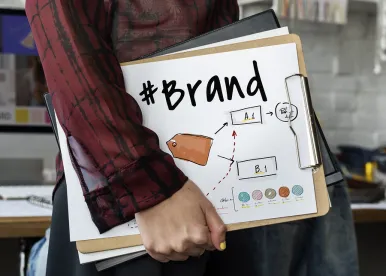Social media influencers have become one of the most effective channels for companies to reach and engage with their target market online. So far in 2017, marketers have spent over $1 billion to have influencers post Instagram photos marketing their products. Last year, marketers spent $576 million. Because of the increased popularity with this new form of marketing, the FTC has begun to crack down on these influencers and the companies using the influencers to market their products online.
The FTC’s Endorsement Guides outline the requirements influencers must follow when making paid social media posts and endorsements. Among these guidelines, the FTC requires an influencer endorsing a product to clearly and conspicuously disclose any material connection between the influencer and the manufacturer, company, or brand. A material connection may be established by a business or family relationship, monetary payment, or the gift of a free product. These rules do not just apply to the influencers but the marketers as well.
A recent study by Mediakix found that of the top 50 most followed celebrity Instagram accounts only 7% of their collective posts were FTC compliant. Manufacturers in the fashion industry are especially vulnerable to potential FTC violations, with fashion product endorsements constituting 61% of the influencer posts Mediakix analyzed.
Due to the number of violations, the FTC sent out more than 90 letters to social media influencers, manufacturers, companies, and brands reminding them of the disclosure requirements. The letters warned influencers that simply posting endorsements with a “#sp,” “#spon,” “Thanks [Brand],” or “#partner,” were not sufficiently clear. Additionally, the FTC advised influencers to make disclosures of any material connection above the “more” button and to avoid multiple hashtags or links as they are likely not sufficiently conspicuous.
Recent Settlements for Alleged FTC Violations
In 2016, national retailer Lord & Taylor settled with the FTC after failing to disclose that certain influencers’ posts displaying Lord & Taylor’s Design Lab collection were actually paid promotions. Lord & Taylor allegedly paid 50 influencers to post an Instagram photo of them in the same paisley dress and tagging @lordandtaylor. The posts reached over 11.4 million Instagram users over two days which led to 328,000 brand engagements with the retailer and caused the dress to sell out.
More recently, Warner Bros. settled with the FTC over a charge concerning its video game, “Middle Earth: Shadow of Mordor.” Warner Bros. was said to have failed to disclose it had paid video game influencers thousands of dollars to post positive reviews of the video game on YouTube and other social media sites. The FTC also alleged Warner Bros. required the influencers to promote the game in a positive way and not mention any bugs or glitches. The influencers did not disclose their posts were sponsored or that they were paid by Warner Bros. to make such post.
Social Media Platforms Launch New Advertising Feature
To provide its users with more transparency, Instagram has recently announced that the company will let users who work with sponsors mark their post as an ad with a “paid partnership” tag at the top of the post. Currently, Facebook uses a similar disclosure system on its social network platform. This new feature is a step in the right direction for influencers to attempt to avoid potential FTC violations. However, the FTC has not officially weighed in on whether this new feature will satisfy the agency’s disclosure guidelines.
While using influencers to market a product can be extremely effective, brand owners must be very careful to avoid an FTC violation. When seeking to market a product, companies should ensure they comply with all of the FTC requirements and are aware of all the risks. Most importantly, companies should educate influencers and proactively monitor their adherence to FTC guidelines. A few things to keep in mind are:
-
All disclosures should be clear and conspicuous. The disclosures must be as close as possible to the ad itself. Place any disclosure above the “more” button in an Instagram post. Do not make disclosure in a string of hashtags or in a block of text.
-
Place # at the top of the post and make sure the # is not vague. Do not use #sp, #thankyou, #partner, or #collab. Use #ad, #advertisement, #sponsored, or #promotion. Make sure to not abbreviate the brand name. It must be obvious to the consumer what brand is being promoted.
-
Make sure to disclose any material connection. Disclose paid promotions, promotion of products received for free (#freebiesarematerial!), affiliate links, and contests or sweepstakes.
-
Video Promotions. Disclosure must occur at the beginning of a video, not only in the video description.




 />i
/>i

